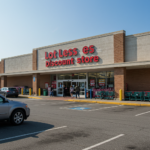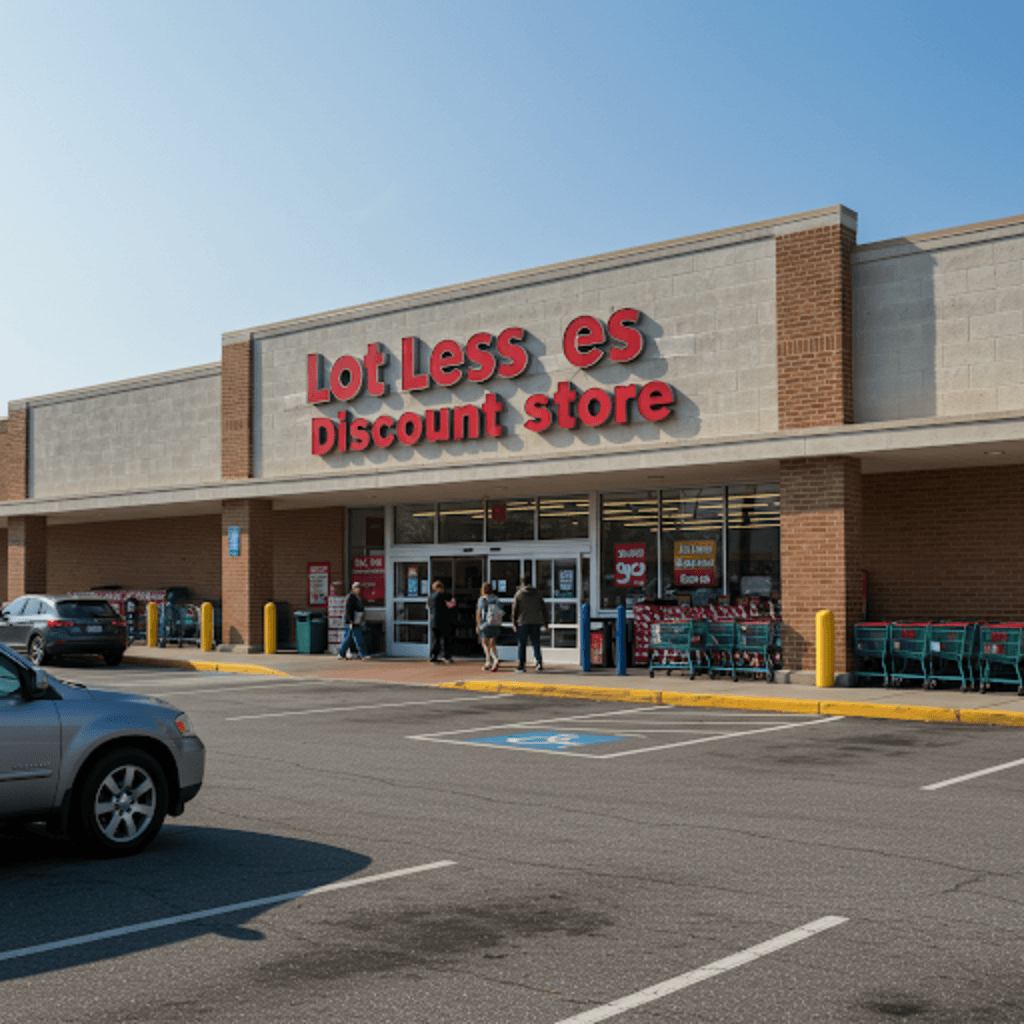
The rise and fall of Lot-Less: A New York discount icon
For decades, New Yorkers knew where to go for a bargain that was almost unbelievable. Lot-Less Closeouts, with its distinctive yellow and red signage, was a treasure trove of deeply discounted merchandise, a place where you could find anything from brand-name groceries to designer clothing, all at prices that seemed too good to be true. But after almost 50 years of serving bargain-hungry shoppers, Lot-Less closed its doors in early 2024, leaving behind a legacy of quirky deals and a void in the city’s discount retail landscape.
The Lot-Less experience: More than just low prices
Lot-Less wasn’t just a store; it was an experience. Unlike the sterile, predictable aisles of big-box retailers, Lot-Less offered a sense of adventure. You never quite knew what you’d find. One day, it might be a pallet of imported olive oil at a fraction of the supermarket price; the next, a rack of high-end sweaters marked down by 90%. This element of surprise, the thrill of the hunt, was a key part of the Lot-Less appeal.
The stores themselves were often chaotic, with merchandise piled high and aisles sometimes difficult to navigate. But this was part of the charm. Lot-Less wasn’t about a polished shopping experience; it was about the raw, unfiltered joy of finding an incredible deal. Regular customers developed a keen eye for spotting hidden gems amongst the seemingly random assortment of goods. They knew how to decipher the hand-written price tags, often layered with multiple markdowns, and they understood the unspoken language of the Lot-Less shopper – a nod of acknowledgement, a shared smile over a particularly impressive find.

The business model: How Lot-Less made it work
Lot-Less’s success was built on a simple but effective business model: closeouts. The company specialized in acquiring merchandise from other retailers and manufacturers that needed to clear out inventory. This could be due to a variety of reasons: overstock, discontinued products, slightly damaged packaging, or even bankruptcies. Lot-Less would buy these goods at a steep discount and then pass those savings on to its customers.
This model allowed Lot-Less to offer prices that were often significantly lower than even other discount stores. While a typical retailer might mark up a product by 50% or more, Lot-Less operated on much smaller margins, relying on high volume sales to generate profit. This strategy worked well for many years, particularly in a city like New York, where high living costs made bargain hunting a necessity for many residents.
The changing retail landscape: Challenges for Lot-Less
Despite its loyal customer base, Lot-Less faced increasing challenges in the 21st century. The rise of online retail giants like Amazon put immense pressure on brick-and-mortar stores, particularly those in the discount sector. Consumers could now find a vast selection of products at competitive prices from the comfort of their own homes, often with free shipping and easy returns.
The changing demographics of New York City also played a role. As neighborhoods gentrified and rents soared, many of Lot-Less’s core customers – lower- and middle-income families – were forced to move further out from the city center, making it less convenient to shop at the stores.
Furthermore, the closeout market itself became more competitive. Other discount chains, like TJ Maxx and Marshalls, expanded their presence in New York City, offering a more curated and organized shopping experience, albeit with less dramatic discounts than Lot-Less. These stores appealed to a broader demographic, including those who valued a more predictable and less chaotic shopping environment.
The final days: A farewell to a New York institution
In late 2023, Lot-Less announced that it would be closing all of its remaining stores. The news was met with sadness and nostalgia by many New Yorkers, who shared memories of their favorite Lot-Less finds on social media. The closing sales were a frenzy, with shoppers lining up for hours to snag one last bargain.
The closure of Lot-Less marked the end of an era in New York City retail. It was a reminder that even the most beloved and iconic businesses can succumb to the forces of change. While the city’s retail landscape continues to evolve, the memory of Lot-Less will live on, a testament to the enduring appeal of a good bargain and the unique character of New York City shopping.
Beyond the bargains: The social impact of Lot-Less
Lot-Less was more than just a place to find cheap goods; it also served an important social function. For many low-income families, it was a lifeline, providing access to essential items like food, clothing, and household goods at affordable prices. In a city with a significant wealth gap, Lot-Less offered a level playing field, where everyone could find something they needed, regardless of their budget.
The stores also served as community hubs, places where people from different backgrounds could come together in pursuit of a common goal: finding a great deal. The shared experience of navigating the crowded aisles and uncovering hidden treasures fostered a sense of camaraderie among shoppers.
Lessons from Lot-Less: What the future holds for discount retail
The closure of Lot-Less offers valuable lessons for the future of discount retail. While the online market continues to grow, there is still a demand for brick-and-mortar stores that offer a unique and compelling shopping experience. However, these stores must adapt to the changing landscape and find ways to differentiate themselves from the competition.
One key takeaway is the importance of creating a sense of discovery and excitement. Lot-Less’s chaotic and unpredictable inventory was a major part of its appeal. While a more organized approach may be necessary for some retailers, maintaining an element of surprise can be a powerful draw for customers.
Another lesson is the need to cater to the specific needs of the local community. Lot-Less thrived by providing affordable goods to a price-sensitive population. Understanding the demographics and economic realities of the surrounding area is crucial for success in the discount retail sector.
Finally, the closure of Lot-Less highlights the importance of adapting to changing consumer preferences. While the thrill of the hunt will always appeal to some shoppers, others prioritize convenience and a more curated selection. Discount retailers must find a balance between these competing demands to thrive in the long term.
The enduring legacy of Lot-Less
Although the physical stores are gone, the spirit of Lot-Less lives on in the memories of its loyal customers. It serves as a reminder that a successful business is about more than just profits; it’s about creating a unique experience, serving a community, and adapting to the ever-changing world. The lessons learned from Lot-Less’s rise and fall will continue to shape the future of discount retail in New York City and beyond.
The hunt of a perfect find
The excitement of discovering a hidden gem among the seemingly endless piles of merchandise was a significant draw. Shoppers often shared stories of their most incredible finds, creating a sense of community and shared experience.
The impact of e-commerce
The rise of online shopping undoubtedly played a role in Lot-Less’s decline. The convenience and vast selection offered by e-commerce giants presented a formidable challenge to traditional brick-and-mortar stores. The final days were emotional, not the same feeling, just the same old closeout, with a strong fell.
- Lot less was not just about a discount store.
- Lot less show to the world how offer good prices.
- The treasure feeling was a main part of shopping experience.
- Lot less was a place where a lot New yorkers find the opportunity to buy thing with a low budget.
The future of discount stores
The future of discount stores in the physical retail landscape may depend on their ability to offer unique experiences and cater to specific niches. While online shopping continues to grow, there’s still a place for brick-and-mortar stores that can provide something special, something that can’t be replicated online.







